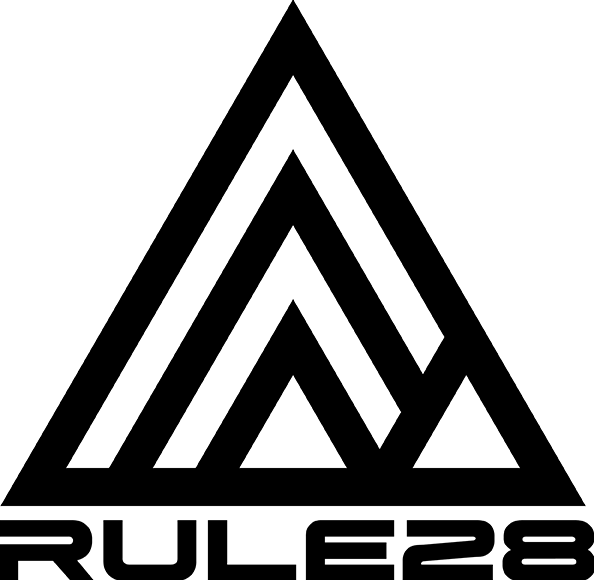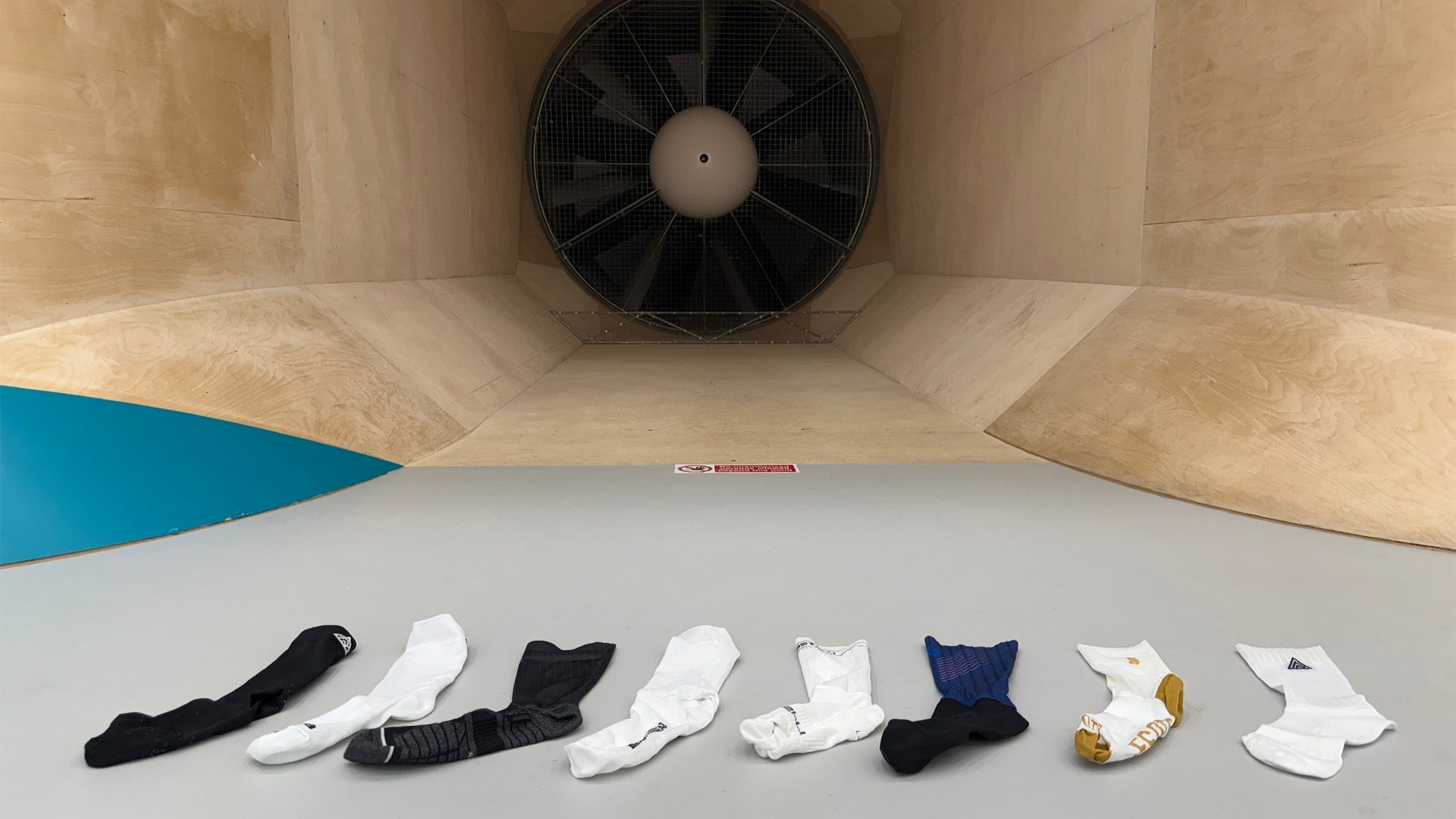Aero socks are the first piece of kit you should consider upgrading when it comes to buying performance. In terms of cost per watt saved, they typically offer the best return on investment compared to other performance-enhancing options, such as clothing, bikes, or chains. More on this here
There are now several brands offering aero socks. Some use the same materials, while others employ unique fabrics in an attempt to unlock performance advantages or to stand out visually.
Previously, we tested our One Aero Socks against our older generation of aero socks and observed an impressive performance gain (That test can be found here) - enough, we felt, to justify the significantly increased material cost. But how do they compare to the rest of the market? To find out, we selected a range of the most popular and performance-focused aero socks available and put them to the test.
Important Disclaimers
1. Individual Variability
This test was conducted on a single rider. The performance of kit, as well as other cycling equipment, can vary between individuals. From our experience, trends in sock performance tend to remain fairly consistent-i.e. the best-performing sock on one person is generally the best-performing on another - but the actual Watts saved will vary.
Previously, we have seen greater savings from aero socks that we did in this test, even when testing the same products. This highlights an important point: individual results may differ.
2. Performance Changes with Speed
Performance varies with speed. As shown in the data, it is not possible to extrapolate performance at low speeds to predict performance at higher speeds.
The Test
Location & Date
- Venue: Silverstone Sports Engineering Hub Wind Tunnel, UK
- Date: 25th March 2025
- Conducted by: ATP Performance, an independent aerodynamics and cycling performance consultancy
Although the testing was funded by Rule 28, ATP Performance managed all data collection, setup, and methodology independently. We strive for full transparency and unbiased reporting. To reinforce this, all products tested have been donated to SSEH and are available for independent verification by everyone visiting.
Test Setup
- Rider: Rowan Baker, professional rider for Raptor Factory Racing
- Bike: Raptor RL1
- Position: A stable and repeatable position, maintained comfortably for the duration of each test
- Monitoring: Multiple camera angles (side, front, and top) and edge outlines ensured consistency across runs
- Cadence: Held constant for all test runs
- Calibration: The system was pre-tared and calibrated before each run
Testing Protocol
- Each pair of socks was brand new prior to testing.
- Tests were conducted at speeds ranging from 30–50 kph, in 5 kph increments, reflecting most real-world rider speeds.
- Each test run lasted 30 seconds.
- Yaw angle: 0 degrees (to eliminate crosswind effects and focus solely on product performance).
Socks Tested
- Rule 28 Pro Sock (Baseline – standard sock)

- Rule 28 Aero Ish Sock (Aero pattern on a standard sock)

- Rule 28 One Aero Sock

- Competitor SZ

- Competitor C

- Competitor N

- Competitor SN

- Competitor A

- Rule 28 Prototype

Results & Data
Power required (Watts) to maintain a set speed with each set of aero socks
| Speed (Kph) | |||||
| 30 | 35 | 40 | 45 | 50 | |
| Rule 28 Pro Socks | 112.25 | 172.25 | 252.30 | 350.91 | 474.97 |
| Rule 28 Aero-Ish Socks | 111.92 | 173.86 | 250.45 | 348.73 | 484.20 |
| Rule 28 One Aero Socks | 111.13 | 172.07 | 248.24 | 347.62 | 471.61 |
| Competitor SZ | 113.78 | 176.82 | 255.17 | 354.83 | 479.07 |
| Competitor C | 110.68 | 171.38 | 254.42 | 354.51 | 474.78 |
| Competitor N | 110.19 | 173.50 | 251.90 | 349.17 | 477.87 |
| Competitor SN | 112.05 | 173.38 | 253.35 | 354.37 | 479.73 |
| Competitor A | 111.62 | 170.90 | 257.84 | 360.71 | 486.16 |
| Rule 28 Prototype | 111.39 | 169.82 | 249.02 | 352.05 | 475.16 |
Difference in power required (Watts) Vs. a non-aero sock (Rule 28 Pro Sock)
negative numbers indicate worse performance
| Speed (Kph) | |||||
| 30 | 35 | 40 | 45 | 50 | |
| Rule 28 Aero-Ish Socks | 0.33 | -1.60 | 1.85 | 2.18 | -9.23 |
| Rule 28 One Aero Socks | 1.12 | 0.19 | 4.07 | 3.29 | 3.36 |
| Competitor SZ | -1.53 | -4.56 | -2.87 | -3.92 | -4.10 |
| Competitor C | 1.57 | 0.88 | -2.12 | -3.60 | 0.19 |
| Competitor N | 2.06 | -1.25 | 0.40 | 1.74 | -2.90 |
| Competitor SN | 0.20 | -1.13 | -1.05 | -3.46 | -4.76 |
| Competitor A | 0.63 | 1.35 | -5.54 | -9.80 | -11.19 |
| Rule 28 Prototype | 0.86 | 2.43 | 3.28 | -1.14 | -0.19 |

Conclusion of Aero Sock Testing
The test results demonstrate that aero socks can have a measurable impact on cycling efficiency, with some models offering significant power savings over others.
Key Findings:
- Rule 28 One Aero Socks performed consistently well, showing the best overall performance across most speeds. They required notably less power than the baseline Rule 28 Pro Socks, particularly at 40–50 kph, where they showed power savings of up to 4.07W at 40 kph and 3.36W at 50 kph.
- Rule 28 Prototype socks also performed strongly, with power savings comparable to or slightly better than the One Aero Socks at lower speeds (30–40 kph), though their performance slightly declined at 45–50 kph.
- Competitor C were one of the best-performing competitor socks, demonstrating low power requirements at lower speeds but increasing power demands at higher speeds.
- Competitor SZ and Competitor A Aero Socks had the highest power demands, suggesting they are less aerodynamically efficient in this test setup. This makes sense as there are two differences in these products vs the rest of the aero socks we tested. Competitor SZ is a smooth fabric with lines printed onto it - there is no texture to this sock. Competitor A used dimples instead of stripes that are typical in aero socks.
- The Rule 28 Aero-Ish Socks showed mixed performance, with slight power savings at most speeds but a significant increase in power demand at 50 kph.
- Competitor performance varied significantly, with some brands underperforming the Rule 28 baseline at most speeds. For example, Competitor A exhibited the highest power demand increase at higher speeds.
Final Takeaways:
- The Rule 28 One Aero Socks emerged as a top performer, demonstrating consistent power savings across all speeds.
- The Rule 28 Prototype showed promise, particularly at lower speeds, though further refinement may be needed for higher-speed efficiency.
- Not all aero socks are created equal-some brands delivered significantly poorer performance, reinforcing the need for thorough testing before purchase.
- Performance benefits depend on speed-extrapolating results across different speeds is not reliable, as seen in the variation between 30 kph and 50 kph results.
For riders looking for the best balance of performance and efficiency, the Rule 28 One Aero Socks offer one of the most effective options in this test.
"All testing [was] done maintaining the same position throughout, all runs [were] pre tared and calibrated, every other element remained constant... Obviously variable from person to person but generally socks are a bit more uniform in how they test than say suits. - Andy Turner, head of ATP Performance
And for the data nerds...
Full CSV file abvailable to download here






Share:
Woven vs. Knitted Fabrics: The Aerodynamic Edge and Trade-offs